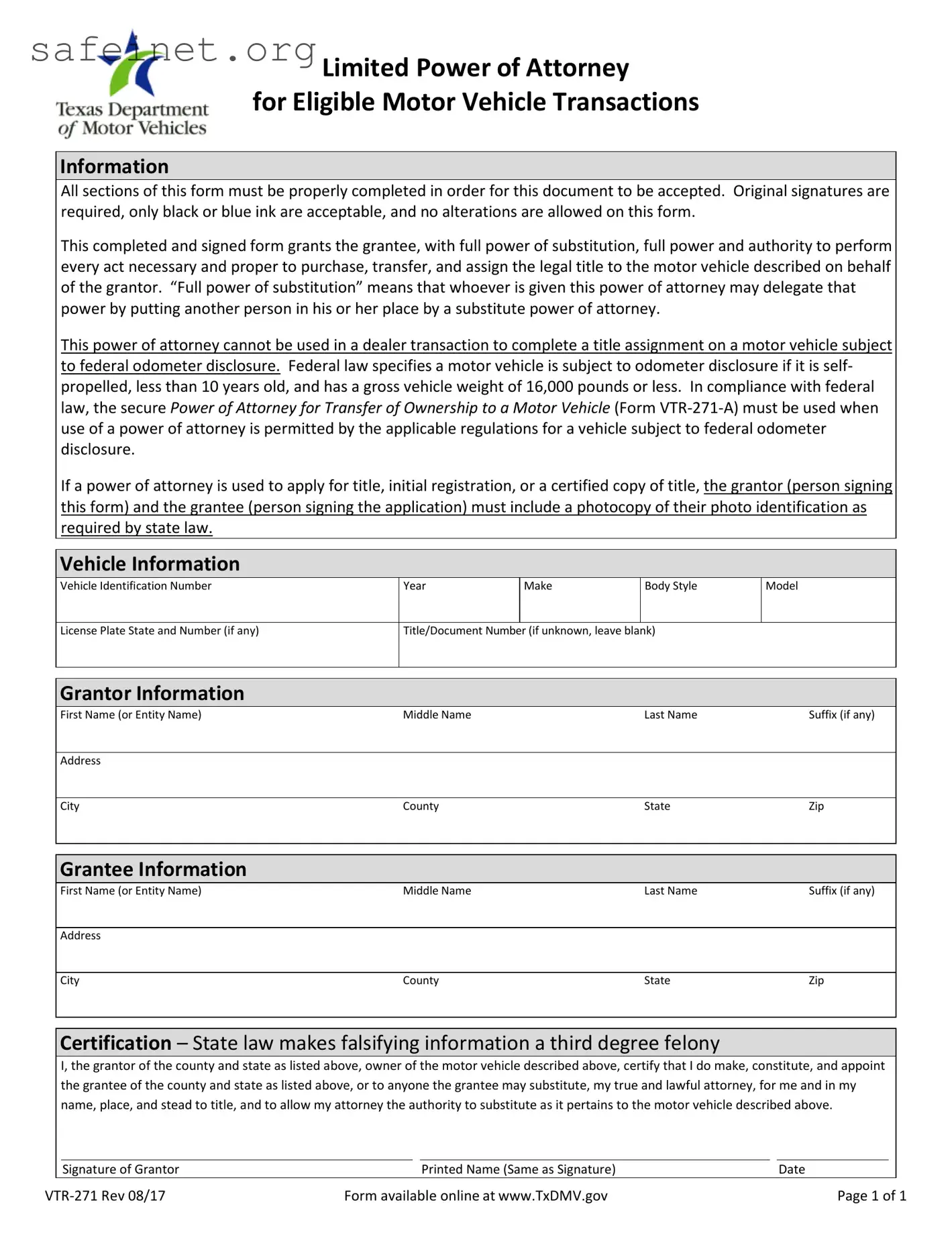Limited Power of Attorney
for Eligible Motor Vehicle Transactions
Information
All sections of this form must be properly completed in order for this document to be accepted. Original signatures are required, only black or blue ink are acceptable, and no alterations are allowed on this form.
This completed and signed form grants the grantee, with full power of substitution, full power and authority to perform every act necessary and proper to purchase, transfer, and assign the legal title to the motor vehicle described on behalf of the grantor. “Full power of substitution” means that whoever is given this power of attorney may delegate that power by putting another person in his or her place by a substitute power of attorney.
This power of attorney cannot be used in a dealer transaction to complete a title assignment on a motor vehicle subject to federal odometer disclosure. Federal law specifies a motor vehicle is subject to odometer disclosure if it is self- propelled, less than 10 years old, and has a gross vehicle weight of 16,000 pounds or less. In compliance with federal law, the secure Power of Attorney for Transfer of Ownership to a Motor Vehicle (Form VTR-271-A) must be used when use of a power of attorney is permitted by the applicable regulations for a vehicle subject to federal odometer disclosure.
If a power of attorney is used to apply for title, initial registration, or a certified copy of title, the grantor (person signing this form) and the grantee (person signing the application) must include a photocopy of their photo identification as required by state law.
Vehicle Information
Vehicle Identification Number |
Year |
Make |
Body Style |
Model |
|
|
|
|
|
License Plate State and Number (if any) |
Title/Document Number |
(if unknown, leave blank) |
|
|
|
|
|
|
Grantor Information
First Name (or Entity Name) |
Middle Name |
Last Name |
Suffix (if any) |
|
|
|
|
Address |
|
|
|
|
|
|
|
City |
County |
State |
Zip |
Grantee Information
First Name (or Entity Name) |
Middle Name |
Last Name |
Suffix (if any) |
Address |
|
|
|
City |
County |
State |
Zip |
Certification – State law makes falsifying information a third degree felony
I, the grantor of the county and state as listed above, owner of the motor vehicle described above, certify that I do make, constitute, and appoint the grantee of the county and state as listed above, or to anyone the grantee may substitute, my true and lawful attorney, for me and in my name, place, and stead to title, and to allow my attorney the authority to substitute as it pertains to the motor vehicle described above.
Signature of Grantor |
|
Printed Name (Same as Signature) |
|
Date |

